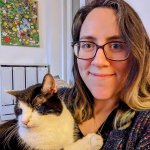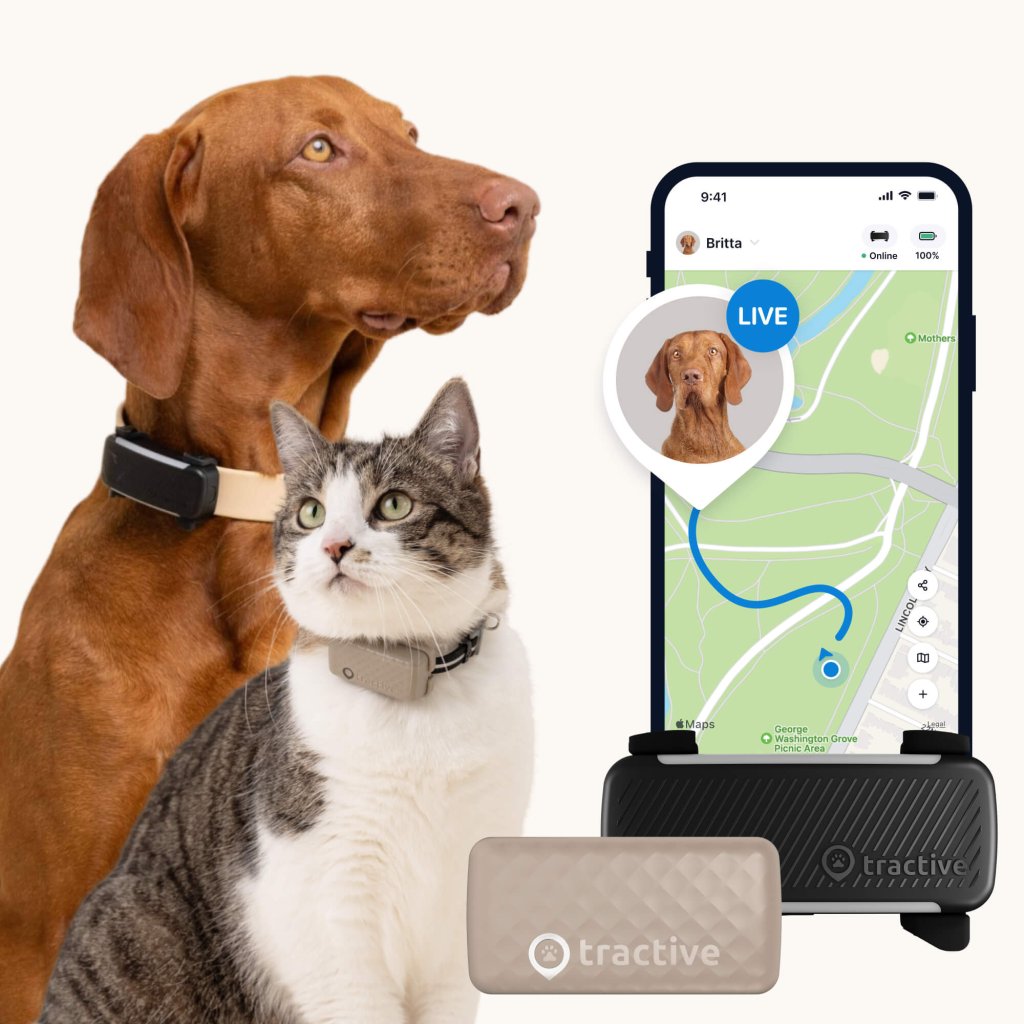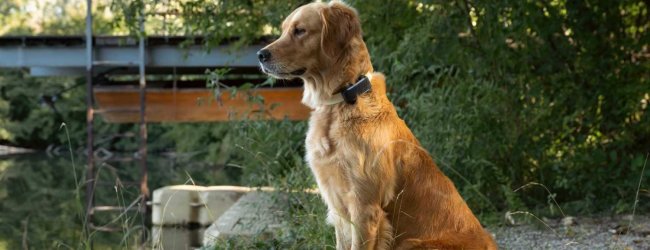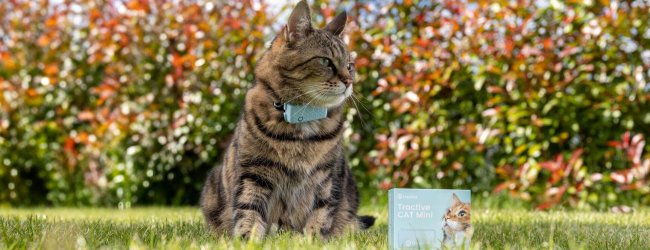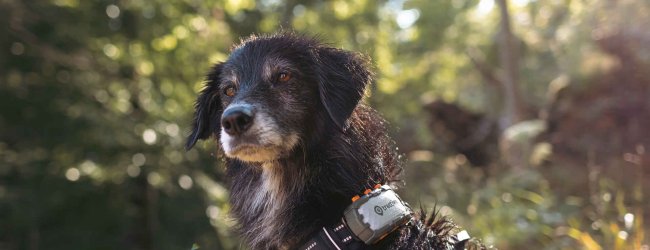What Is A Virtual Fence – And Which One’s Best For Pets?
Whether you have farmed animals or busy dogs to keep up with, here's how a virtual fence can help you get peace of mind.

Gone are the days of having to rely on physical fences to keep your animals safe. Virtual fences come with so many benefits over traditional fencing, you’ll ask yourself why you never used one before. So, how does it work? And what are the advantages? What’s the best virtual fence for dogs and cats – and how different is it for one for cattle? Let’s find out.
Key Takeaways
Virtual fences use GPS technology to create invisible boundaries. These help keep animals within designated safe zones without the need for physical barriers.
You can easily set up, edit, or move virtual fences through an app. Meaning, they’re much more flexible and affordable than traditional physical fences.
Popular trackers for cats and dogs come with built-in virtual fence features. You can mark safe or no-go zones on a map and get escape alerts if your pet enters or exits the area.
Not all virtual fences are built alike. Some invisible fences use electric shocks to keep animals inside an area. Electric fences can have negative effects on animals and their bond with humans.

Always know your buddy is healthy & safe
Read moreWhat is a virtual fence?
A virtual fence is a non-physical, digital fence containing or fencing in animals in the real world. It’s a relatively new technology, helping pet parents and ranchers alike to control their animals without the use of physical fences.1 In other words, it’s a pretty sweet option if your dog has a habit of jumping over – or digging under – your existing outdoor dog fence.
“Virtual fences allow you to contain an animal such as a cow, cat or dog thanks to a little help of GPS and some other amazing technologies.”
Virtual fences are commonly used in the agricultural industry for mapping and containing grazing dairy cattle and other herding livestock. However, GPS trackers with virtual fences for pet parents are also becoming increasingly common, as they provide a safe, reliable way to make sure your dog or cat stays in the yard and out of harm’s way.
How does a virtual fence work?
Virtual fences for animals tend to be easier to install and customize than traditional fences. Here’s how to set yours up:
- First, you attach a GPS tracker to the animal’s collar. It detects the animal’s location anywhere in the world using GPS satellites.
- Then, you draw a virtual fence on a map in the virtual fencing software or app.
- The GPS device communicates with the app to determine where the fence boundaries are and when the animal has crossed it.
- For Tractive GPS Virtual Fences, the system sends an escape alert to your device to signal that the animal has crossed the “fence.” Others might use a sound or electric pulse to train the animal to stay within boundaries.
Virtual fencing for cattle: The perks & the perils
Gone are the days of labor-intensive physical fence construction and maintenance. Instead, ranchers can use GPS-enabled collars to create dynamic, invisible boundaries. When a cow approaches the virtual perimeter, the collar typically delivers an auditory beep or tone. If the animal continues, a mild, short-duration electrical pulse is administered. This trains the cattle to respect the virtual fence, allowing for:
- Dynamic grazing
From your app, you can easily shift grazing areas to ensure your pasture stays healthy, prevent overgrazing, or even help your cattle graze rotationally without moving physical fences. - Targeted grazing
From your app, you can set up your virtual boundaries to guide cattle to specific areas. Great for helping you manage vegetation, control weeds, or even enhance the local biodiversity. - Improved animal welfare
A virtual fence can potentially reduce any stress from physical barriers and entanglement. Keeping your cattle healthy and happy for the long-run, as they can roam freely. - Data collection
Many systems offer data on animal location, activity, and grazing patterns, providing valuable insights for herd management.
⚠️ At the same time, animal rights advocates have called invisible or virtual fences that use electric shock dangerous and unethical. There’s always the chance it might cause your pet pain or worsen any reactive behavior. (Including escaping from home.)
Thankfully, nowadays popular pet trackers like Tractive offer a 100% safe, shock-free virtual fence designed specifically for the pets we love – and would never want to hurt. No electric pulse or shock administered. Just a notification to your phone if your pet leaves a safe zone or enters a no-go zone.
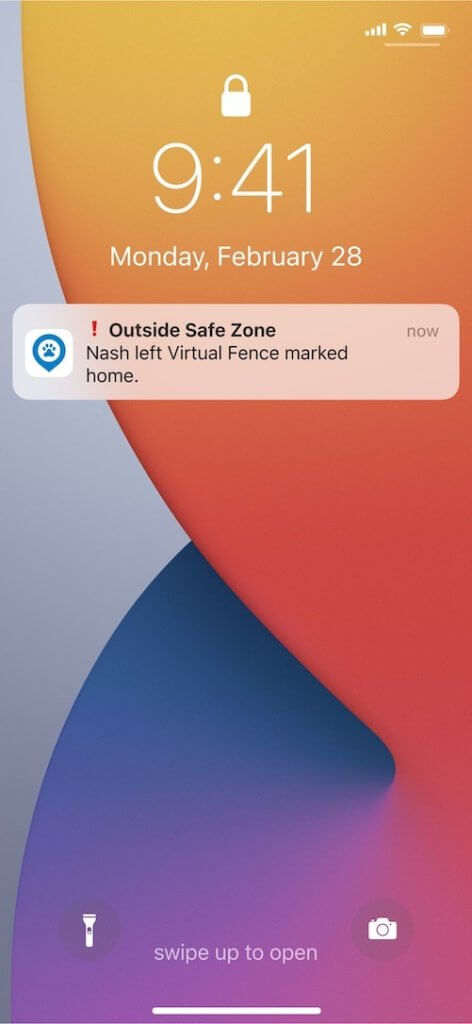
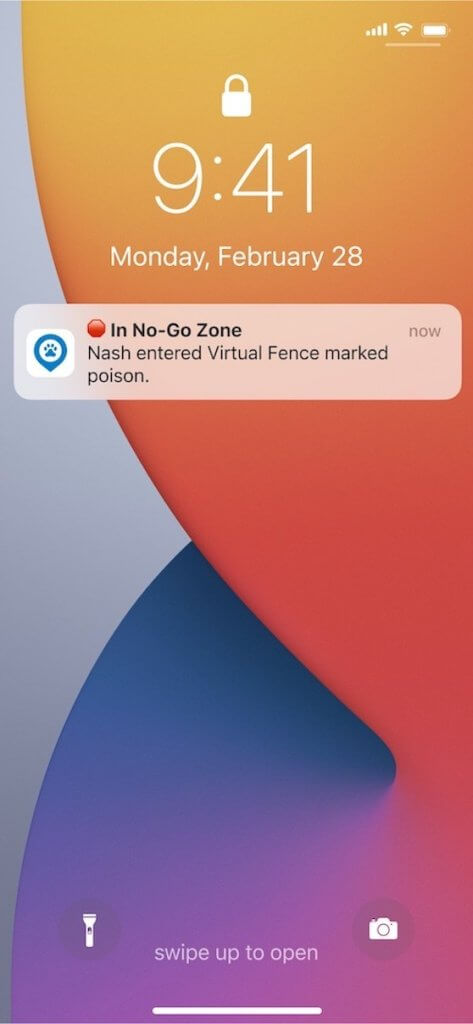
5 perks of virtual fencing over a physical fence
1. Flexible fence boundaries
Since virtual fences are digital, you can easily draw the fence in nearly any shape or size you choose. For example, here’s what a custom-shaped Virtual Fence looks like in the Tractive GPS app:
Once you’ve set up a physical fence, it’s not as easy to customize it as you’d please. Usually, it’d mean another expensive trip to the contractors where you might spend more time discussing your property perimeters over set up. Besides, not all backyards or property perimeters work so well for a physical fence. Especially if you’re near a wooded area or have some complex HOA requirements to meet.
2. Portable
Speaking of flexibility, there is no limit to where the GPS tracking collar can track or where a digital perimeter can be set up, so you can move it around as you like. Plus, with Tractive’s Virtual Fence for instance, you can place the fence nearly anywhere in the world – and reposition it anytime as needed. (To be precise, 175 countries if you’re on a Premium subscription.)
3. Remote control
Another great advantage of virtual fencing is their remote control capabilities. You can set up, manage and monitor the virtual fence and the animal(s) inside from anywhere, anytime on a smartphone, tablet or computer. So you can stay on top of your pet’s location, even while on vacation. Or for agricultural purposes, move a herd with just the swipe of your finger.
“This tracker gives me peace of mind for several dogs. I currently have 4 safe zones for 3 dogs in 2 different states…I can see the history of where the dogs travel and fox trouble spots quickly.”
– Sabine Neumann, US (Source: Trustpilot)
4. Quick, easy set-up
For a virtual fence, there’s no time-consuming, professional installation required. You can set up your virtual fence in under 5 minutes on your mobile app – and by anyone. Just set up your tracker, add (and edit) your fence, and you’re ready to go.
While it depends on the size of your property and how elaborate a job you’d like, the average physical fence may take anywhere between 1-3 days for setup.2 Besides, your contractors might take longer – even weeks – between installing posts, setting up rails or exits, or any other bits and bobs. (Meaning a longer, more cumbersome, significantly more expensive process.)
5. Low cost
In the long run, most virtual fencing systems are cheaper to maintain than physical fences. The Tractive GPS for example is less than $100 + a monthly fee that’s less than your Netflix subscription. (Compared to the $3000 or so you’ll have to pay on average for a physical fence – and ongoing fees for maintenance and upkeep.)
Why the subscription? Well, it’s because of this monthly fee that your tracker connects to mobile networks around the world, helping you track your dog or cat in real-time – and also over an unlimited range.
Read more: GPS Trackers Without Subscription: What Are Your Real Options?
6. Customizability
With Tractive, you can set up safe zones right in your mobile app. Places like your home, backyard, a favorite park, or even a friend’s place – anywhere within a 50 meter range that’s okay for your dog or cat to spend time in. You can shape these zones exactly how you need them, giving you incredible flexibility.
And just as easily, you can mark no-go Zones for places your pet should steer clear of – like that busy road, your neighbor’s pristine flowerbed, or even that tempting muddy puddle you’d rather they avoid.

The real magic here is the instant, smart alerts. Unlike a static physical fence that just, well, sits there (and sometimes gets jumped over!), Tractive sends you real-time notifications straight to your phone. If your pet steps outside a safe zone or wanders into a no-go Zone, you’ll know instantly. This means you can act fast and keep them safe and sound. It’s a proactive, stress-free way to manage your pet’s boundaries, all without a single picket fence in sight.
Virtual fence for cattle v/s virtual fence for dogs (or cats)
Virtual fencing can differ based on what you’re using it for – cattle or for your pets. The core idea remains the same: define a boundary digitally and use a stimulus to encourage the animal to stay within it. However, when you apply this practically, the kind of tools you use to protect your cattle versus a dog or cat tend to be different. Here’s a table covering some of these differences:
| Feature/Aspect | Virtual fence for cattle | Virtual fence for pets |
| Popular brands | Nofence, Halter | Tractive, Halo |
| Primary goal | Pasture management, rotational grazing, animal control | Pet containment, safety |
| Technology | Primarily GPS-based with advanced mapping/software, often requiring base stations | GPS-based with mobile app integration (e.g., Tractive uses GPS and mobile network connectivity) |
| Scale of area | Acres to thousands of acres (large, dynamic) | Small to medium-sized yards, or any area with cellular coverage (flexible, defined in app) |
| Stimulus | Auditory warning, mild electrical pulse (for training) | Primarily app-based notifications (Tractive specifically emphasizes a shock-free system); some others may use static correction |
| Cost | Higher initial investment per system (collars, infrastructure), lower per animal over time due to scale | Lower initial investment per collar, often with a subscription fee for GPS/cellular service |
What’s the best virtual fence for dogs and cats?
No matter what you end up picking, we’d always recommend putting your pet’s health and safety first. Compromising their wellbeing and trust in you is never worth it. Many virtual fences use containment tactics like electrostatic shocks to scare pets into staying inside the fenced area. But without any physical fence boundary, this can be a cruel way to teach your dog or cat to stay inside the (invisible) lines.
So if you’ve found your dog digging a hole beneath your fence for the hundredth time, consider investing in a safe, shock-free virtual fence and GPS pet tracking collar. At less than $100 plus a monthly fee less than your Netflix subscription, you can track your pet and set up virtual fences anywhere in the world – 100% shock free.

